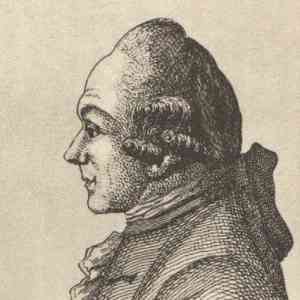Gottfried Christoph Beireis
| Gottfried Christoph Beireis | |
|---|---|
|
Gottfried Christoph Beireis | |
| Born |
2 March 1730 Free imperial city of Mühlhausen, Holy Roman Empire |
| Died |
18 September 1809 (aged 79) Helmstedt, Kingdom of Westphalia |
| Residence | Germany |
| Nationality | German |
| Fields | Physicist, chemist, and physician |
| Institutions | University of Helmstedt |
| Alma mater | University of Helmstedt |
| Doctoral advisor | Lorenz Heister |
| Other academic advisors | Georg Erhardt Hamberger |
| Doctoral students | Christian Heinrich Bünger |
| Known for | Production of cinnabar red dye |
Gottfried Christoph Beireis (2 March 1730 – 18 September 1809) was a German chemist and doctor. He was also a collector of curiosities who rescued some of Jacques de Vaucanson's automata.[1]
Beireis was born in Mühlhausen. He taught anatomy, medicine, surgery, chemistry, botany, natural history, pharmacy, mineralogy, metallurgy, agriculture, forestry, music, painting, and numismatics.
As a student, he discovered a way to convert ammonium sulfide to cinnabar and made a fortune selling the latter as a red dye.
Beireis was a student of Georg Erhardt Hamberger's in Jena in 1753. Beireis became a professor in 1759 without having obtained his MD degree; the degree was awarded subsequently for work done at Helmstadt under Lorenz Heister between 1756 and 1759.
He died in Helmstedt.
References
External links
|
